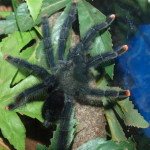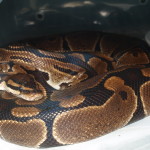Pet Sitter Safety
Pet Sitter safety is a very important issue and should be at the forefront of a pet sitter’s plan. The nature of the business requires sitters to enter strangers’ homes. Steps should be taken to assure your safety and the safety of your employees.
First and foremost, listen to your gut instincts. When speaking to a potential client on the telephone, take care to pick up on cues that might send up red flags. If the caller seems strange, rude, or offensive in any way, it’s best to turn the person down. Also, if the person lives in an area that is considered unsafe, it may be best to turn them down or require visits ONLY during daylight hours.

When going on an initial visit/interview and you have any suspicions whatsoever, it’s a good idea to carry a cellphone, and maybe bring a friend or employee along. A cellphone should be with you at all times, whether on an interview or a regular visit.
Stay alert and aware during the initial interview. Be aware of your surroundings, and use common sense. If something doesn’t feel right, or if the person seems threatening or weird, make up an excuse to end the interview as soon as possible and leave.
Also important is to pay attention to the pets that you will be caring for. No matter how nice and likable the owner is, sitting for a very aggressive dog (or another animal that can cause major harm) may not be the best idea. If the animal has a history of aggressiveness, or the owner has problems controlling the animal, it may be best to suggest a kennel. If you feel a trial run is in order to make sure, schedule a “trial visit” when the owner is away from the house. If the animal is very aggressive without the owner present, it’s best to turn the client down. It’s impossible to care for an animal that won’t allow you to enter the house, and it does no one any good if you are bitten or mauled.
Make sure the owners let you know everyone who has a key to the house, and if anyone will be visiting the house while you are. There is nothing more frightening than walking into an “empty” house and coming face to face with a total stranger! When on visits, do a “walk-around” on the property and in the house. Notice any differences. Was the gate open on your last visit? Did you open a window? Was the light on before? If there are any signs of a break-in, DON’T ENTER THE HOUSE! Leave and call the police immediately, and have them check the house. If there was indeed a break-in, you should contact the homeowners immediately and let them know.
Remember that your safety is first and foremost, and never take any chances. React calmly and professionally, follow your instincts, and enjoy pet sitting!




